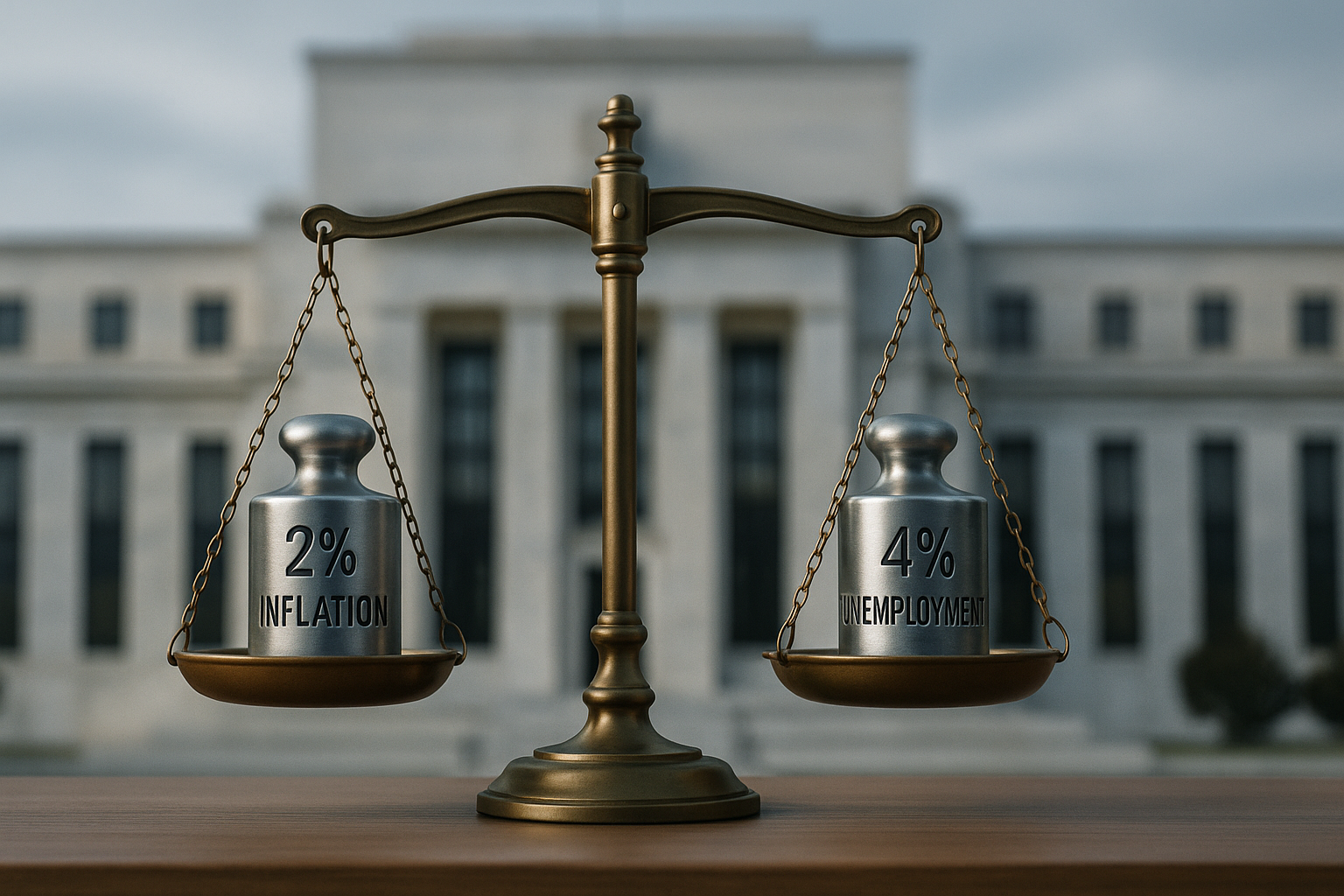The Federal Reserve has always had a bit of a complicated relationship with reality when it comes to economic forecasting. But their latest projections have raised eyebrows even among seasoned Fed watchers who typically give the central bank considerable interpretive leeway.
SoFi's investment chief, Liz Young, recently articulated what many economists have been muttering under their breath: the Fed's economic projections simply don't add up.
"The numbers just don't live in the same universe," Young said, pointing to the disconnect between the Fed's forecasts for unemployment, GDP growth, and inflation.
She's got a point.
The Fed's latest dot plot and economic projections present what can only be described as the economic equivalent of having your cake, eating it too, and somehow losing weight in the process. They're forecasting inflation will gently float down to their 2% target by 2025, while unemployment barely budges from today's 3.9% to around 4.2%. Oh, and GDP growth? That'll stay purring along at a healthy 2-2.5%.
Look, I've been covering the Fed since before Jerome Powell had gray hair, and this scenario isn't just optimistic—it's downright fantastical.
The problem is something economists have understood since the 1950s: the Phillips Curve. It's that pesky inverse relationship between unemployment and inflation that has defined monetary policy for generations. Lower unemployment typically means higher inflation, and getting inflation down usually means pushing unemployment up. It's Economics 101.
Sure, the relationship has weakened somewhat in recent decades (that's a whole other article), but it hasn't vanished into thin air.
"History tells us that getting inflation back to 2% typically requires a more substantial cooling in the labor market," Young noted. Translation: somebody's gotta lose their job for prices to settle down. It's harsh but historically accurate.
Remember Paul Volcker? He didn't defeat the inflation monster of the early 1980s by gently coaxing it into submission. He broke its back with interest rates that sent unemployment soaring to nearly 11%. It wasn't pretty, but it worked.
The Fed's current projections aren't just calling for a "soft landing"—they're describing what one economist I spoke with called an "immaculate disinflation." It's like watching someone promise to parallel park a semi-truck between two china shops without scratching the paint.
So what's going on here?
There are a few possibilities. Maybe the Fed genuinely believes structural changes in the economy—technology, globalization, changing labor dynamics—have fundamentally altered these historical relationships.
Or perhaps (and I think this is more likely) they're engaged in a bit of strategic optimism. After all, the Fed knows its projections influence market expectations, which in turn affect actual economic outcomes. Forecasting doom and gloom could become a self-fulfilling prophecy.
There's also the committee factor. The Federal Open Market Committee consists of multiple members with varying views. What emerges is often a compromise that reflects nobody's actual forecast but rather a middle ground everyone can live with.
For investors, the implications are significant. If you swallow the Fed's rosy scenario hook, line, and sinker, you'd position your portfolio very differently than if you expect a bumpier ride ahead.
Young suggests investors should "prepare for a range of outcomes, not just the goldilocks scenario the Fed is painting." That's probably wise, especially considering the Fed's historical forecasting record is... well, let's just say it's spotty.
(Remember when inflation was "transitory" back in 2021? Pepperidge Farm remembers.)
The disconnect between the Fed's projections and economic reality isn't just an academic curiosity—it has real implications for markets, policy, and everyday Americans trying to make financial decisions.
As Herbert Stein, economist and chairman of the Council of Economic Advisers under Nixon, famously said: "If something cannot go on forever, it will stop." The laws of economic gravity haven't been suspended, no matter what the dot plot suggests.
The real question isn't whether there's a tradeoff between inflation and unemployment—it's how severe that tradeoff will be, and whether markets have adequately priced in the more realistic scenarios.
In the meantime, I'll be watching those monthly jobs reports with more than a little skepticism. And maybe keeping an extra bottle of antacids in my desk drawer, just in case.
